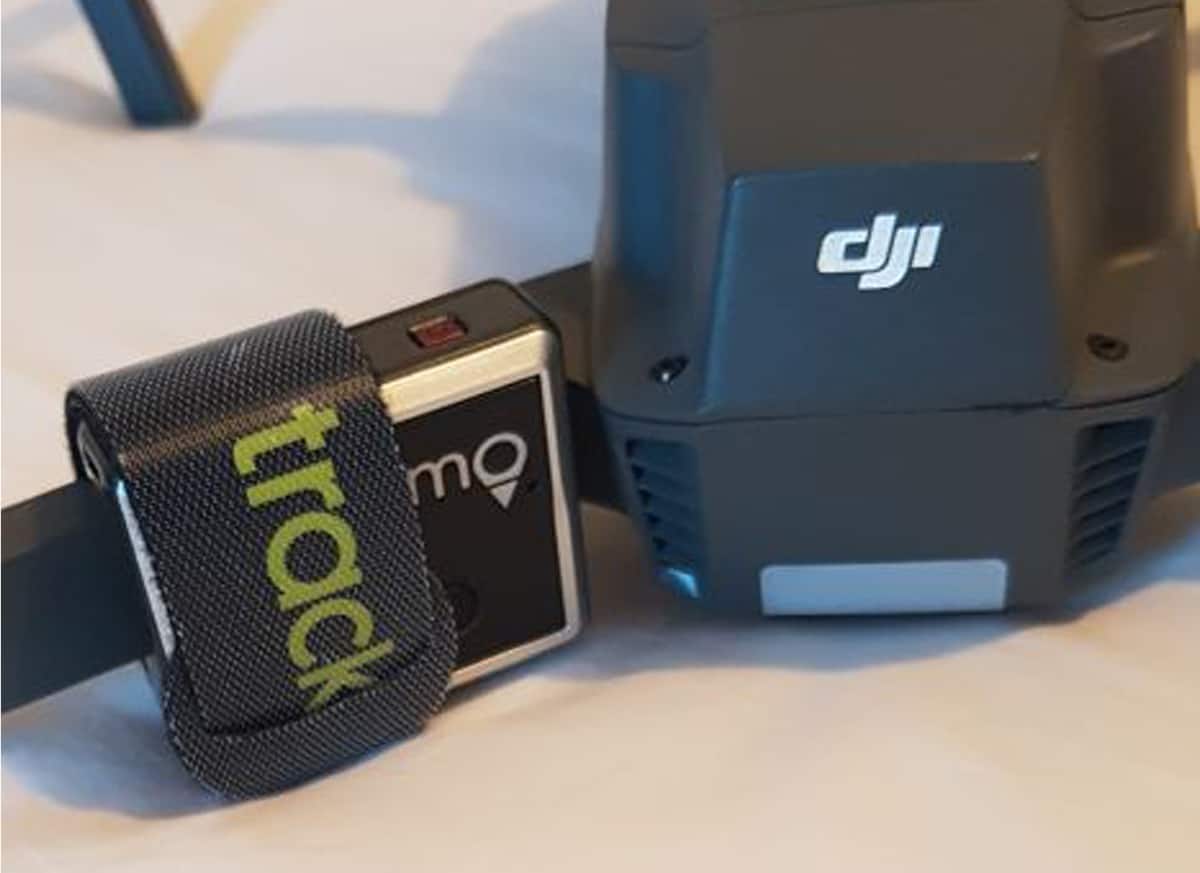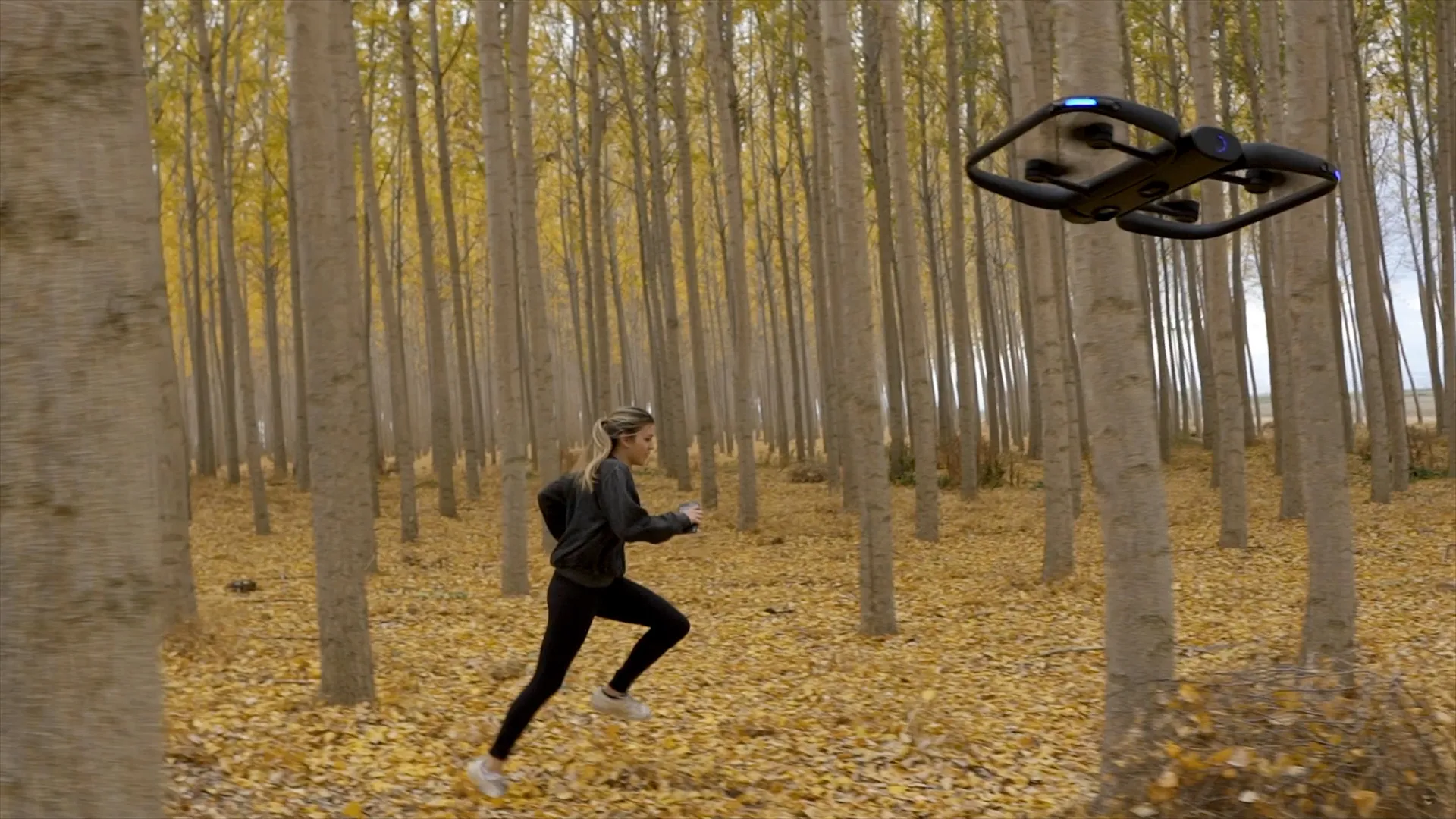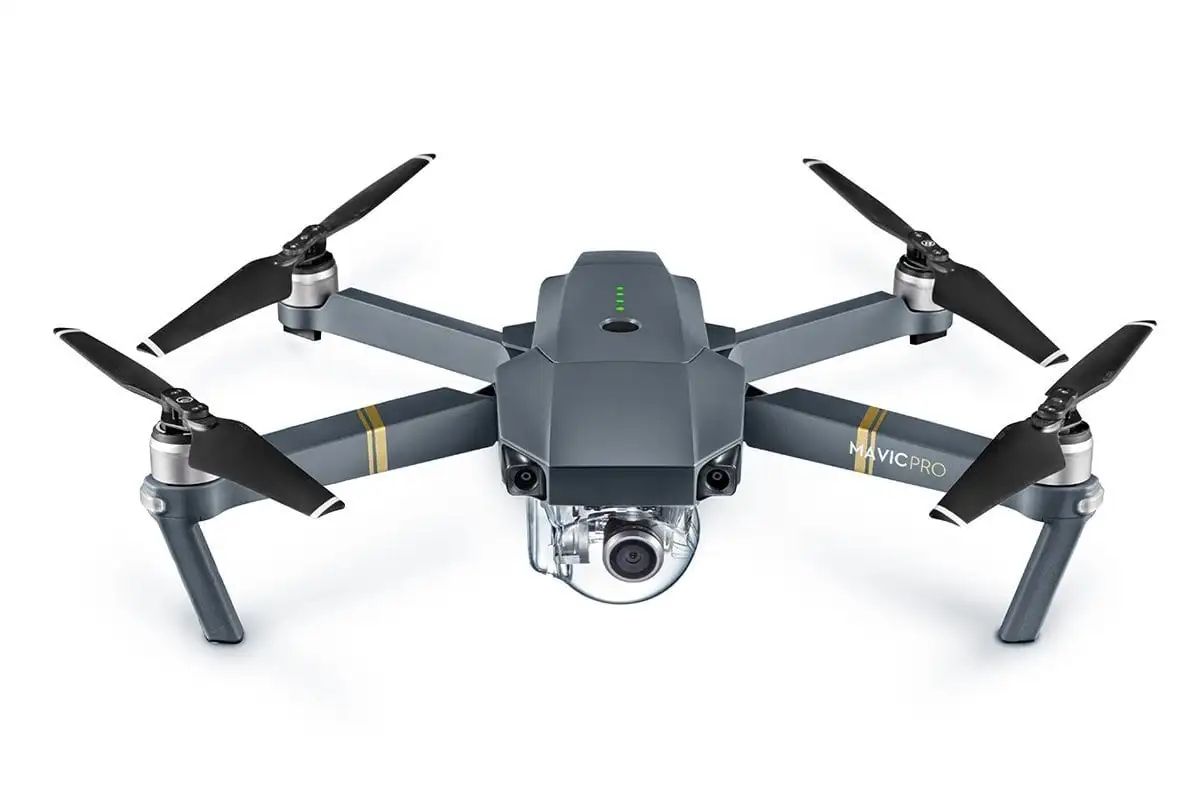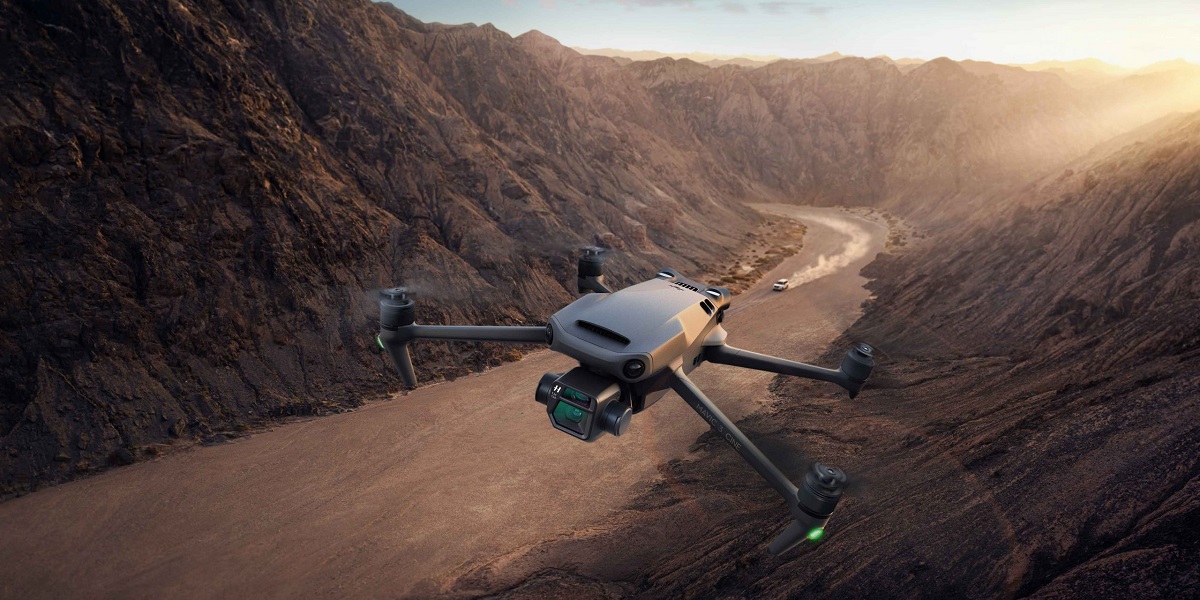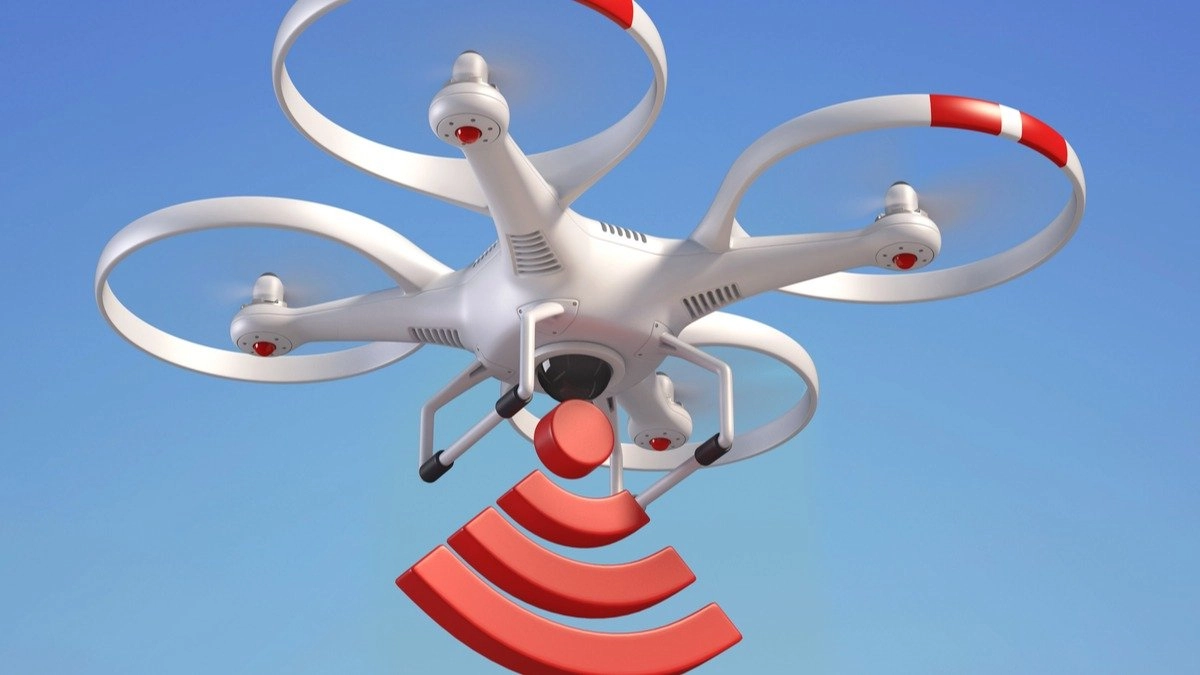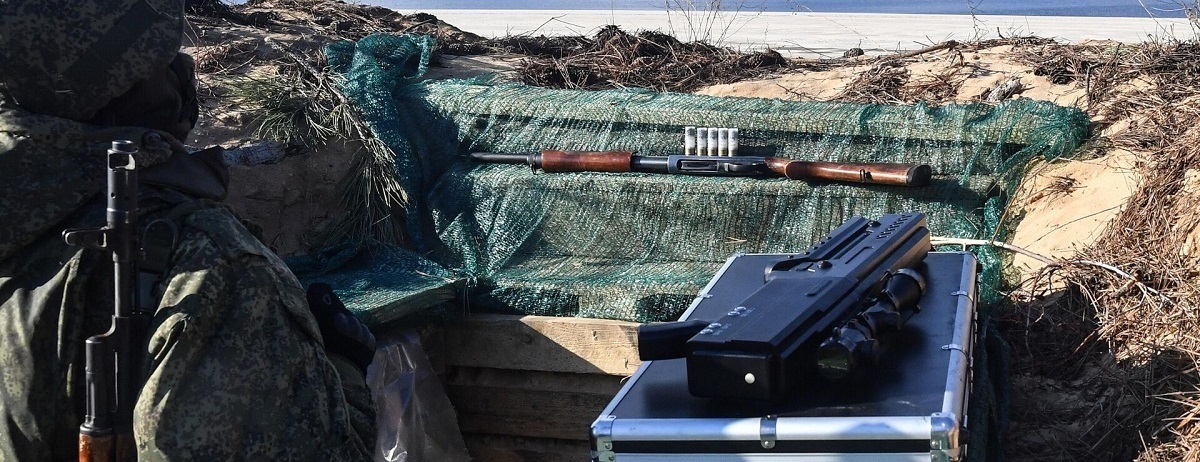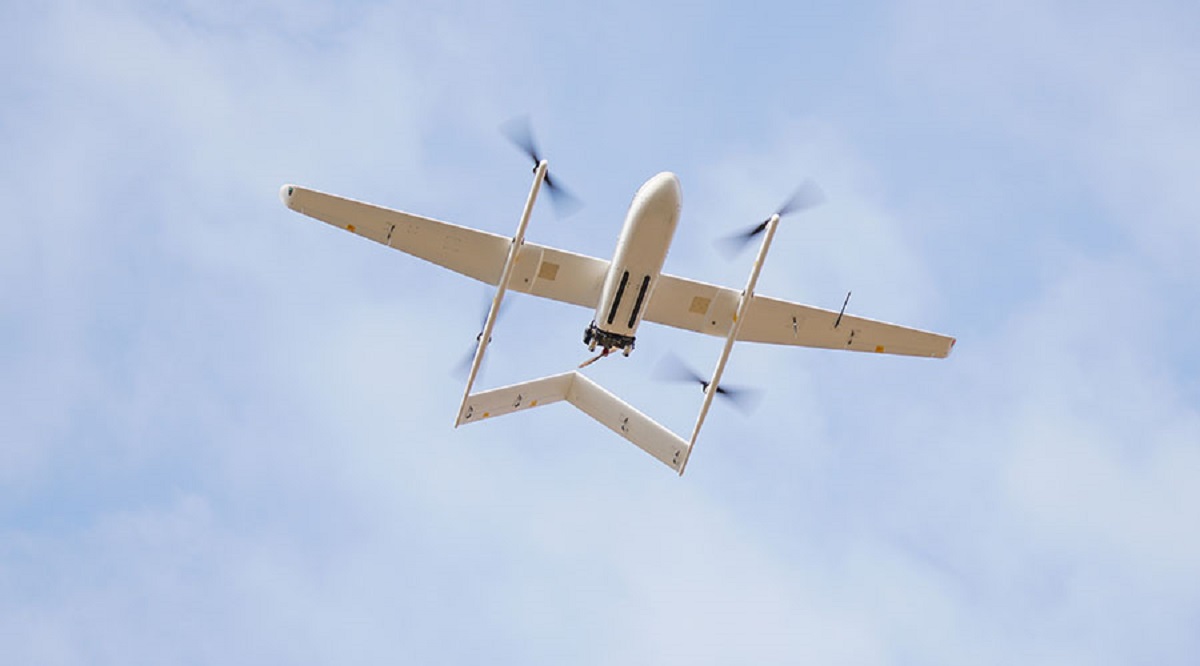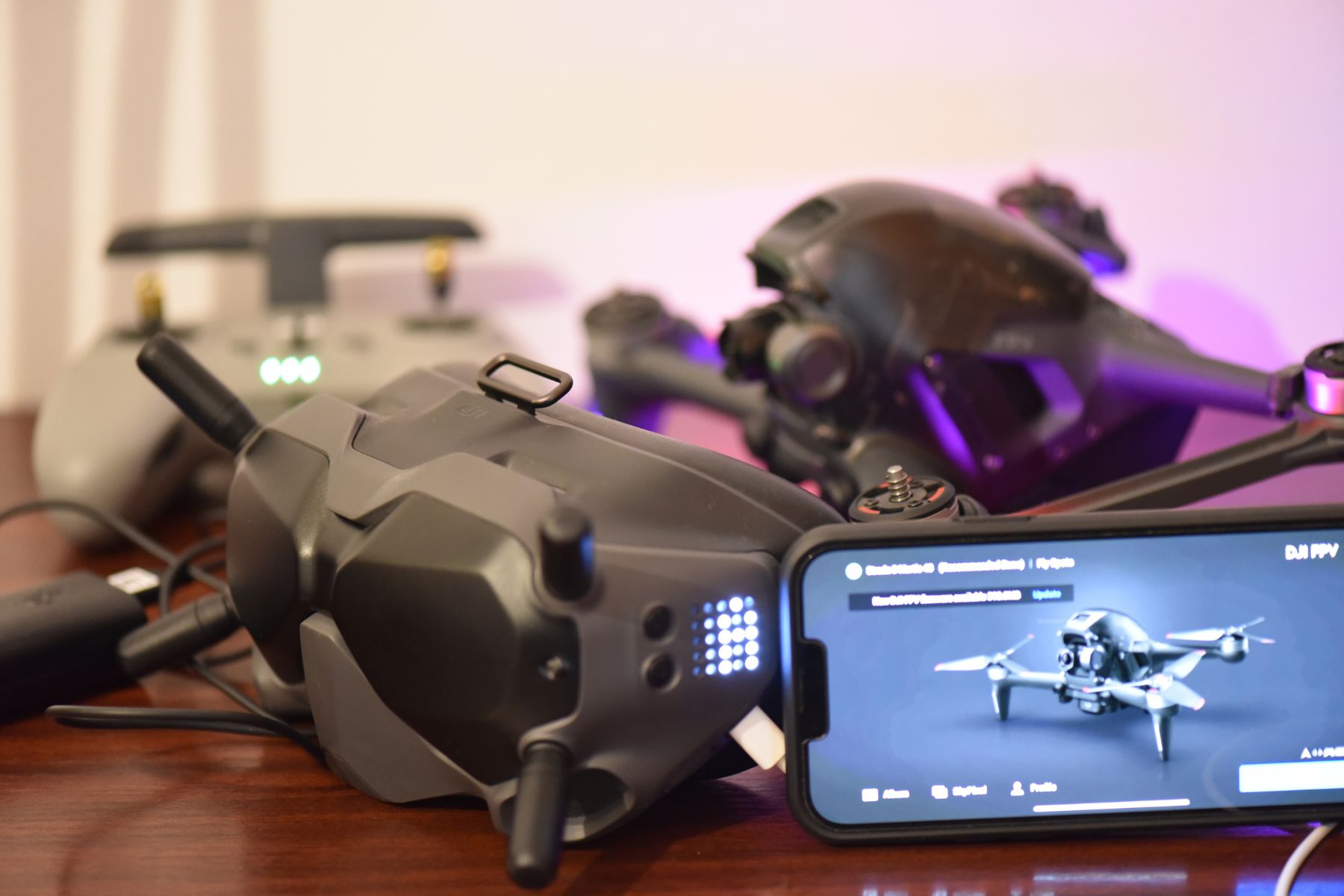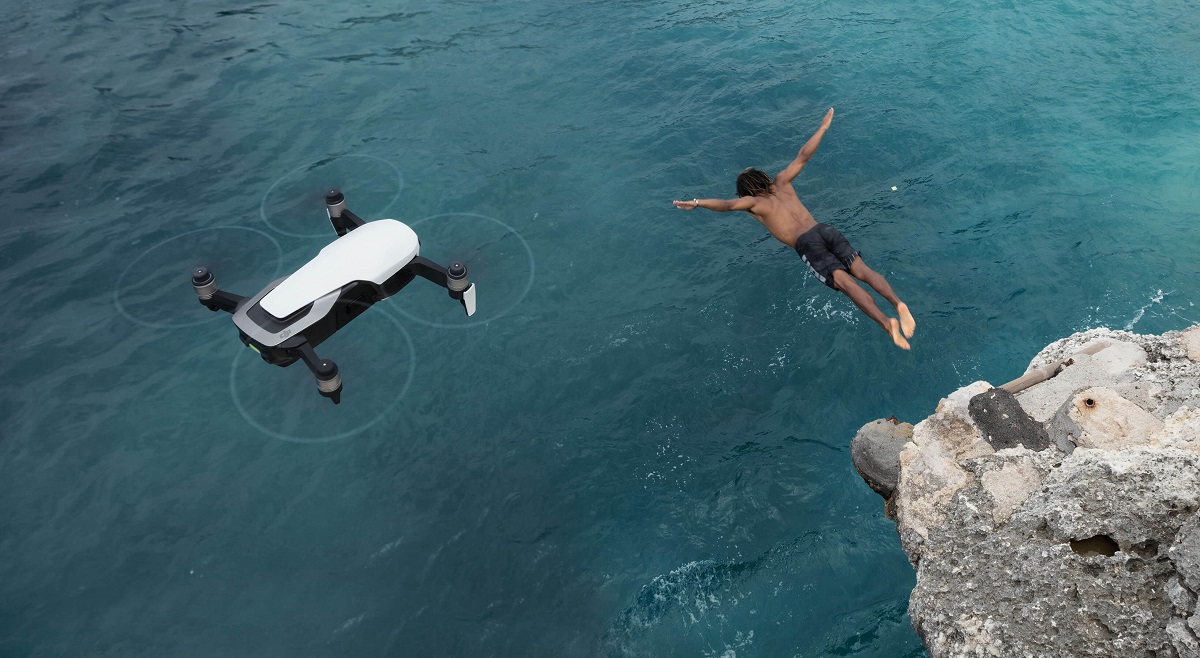Introduction
Drones have become increasingly popular in recent years, with their applications ranging from aerial photography and videography to commercial delivery services. The ability to remotely control these unmanned aerial vehicles (UAVs) has opened up a world of possibilities. However, with the increasing number of drones in the sky, there is a need to track and monitor their movements.
Tracking a drone is not only crucial for ensuring the safety of airspace but also for addressing privacy concerns. Unauthorized drones entering restricted areas, such as airports or government facilities, pose a significant risk and need to be quickly identified and located. Moreover, tracking a drone can also be useful in cases of accidents or incidents, enabling investigators to determine the cause and take appropriate action.
While the idea of tracking a drone may sound challenging, there are several methods available that make it possible. In this article, we will explore different tracking methods and discuss their benefits and limitations. Whether you are a drone enthusiast, a professional pilot, or someone concerned about the safety and security of your surroundings, understanding the various tracking options can help you make an informed decision.
Before diving into the specifics of each tracking method, there are some legal considerations to keep in mind. The regulations surrounding drone tracking vary from country to country, and it is important to familiarize yourself with the laws and guidelines in your jurisdiction. It is essential to ensure that the tracking method you choose complies with legal requirements and respects the privacy rights of individuals.
Now that we have covered the basic introduction to drone tracking and the legal considerations, let’s explore the different methods available for tracking a drone. From GPS tracking to cellular tracking, radio frequency (RF) tracking, and even visual tracking, there are a multitude of options that cater to various scenarios and requirements. We will discuss each method in detail, weighing their pros and cons and providing insight into the best practices for effective drone tracking.
Why track a drone?
The increasing popularity and accessibility of drones have led to a growing need for effective drone tracking methods. Here are some compelling reasons why tracking a drone is essential:
- Safety: Tracking a drone ensures the safety of both the drone operator and individuals in its vicinity. By monitoring the drone’s location in real-time, authorities and air traffic controllers can prevent collisions with other aircraft and ensure the safe operation of drones in restricted airspace.
- Security: Drones equipped with cameras and sensors have the potential to be used for malicious purposes, such as espionage or unauthorized surveillance. Tracking and identifying drones can help security personnel detect any suspicious activities and take appropriate action to prevent potential threats.
- Privacy: With the increasing number of drones in the sky, concerns about privacy have also emerged. Unauthorized drones flying over private property or in restricted areas can invade people’s privacy. By tracking drones, authorities can quickly identify and address any violations, ensuring the privacy rights of individuals.
- Accident investigation: In the event of a drone-related accident, tracking the drone can provide valuable information for the investigation process. Determining the cause of the accident, analyzing flight data, and identifying any equipment malfunctions can help prevent similar incidents in the future and ensure accountability.
- Regulatory compliance: Many countries have specific regulations and guidelines for operating drones, including restrictions on flight altitude, distance from airports, and permissions for commercial use. Effective tracking of drones helps ensure compliance with these regulations, avoiding any legal issues or penalties.
Considering the various reasons outlined above, it is clear that tracking a drone is not only crucial for the safety and security of airspace but also for protecting privacy and ensuring accountability. By implementing robust drone tracking methods, we can mitigate risks associated with UAV operations and foster a harmonious integration of drones into our daily lives.
Legal considerations
When it comes to tracking drones, it is essential to be mindful of the legal considerations surrounding their use. The regulatory landscape varies from country to country, and it is crucial to understand and comply with the laws and guidelines in your jurisdiction. Here are some key legal considerations to keep in mind:
- Privacy laws: Tracking a drone involves collecting and processing personal information, such as the location of the drone operator. Ensure that the tracking method you choose complies with privacy laws and respects the rights of individuals. Seek legal advice if needed to ensure compliance.
- Airspace regulations: Different regions have specific regulations regarding drone operations, including airspace restrictions, flight altitude limits, and distance from airports. Familiarize yourself with the airspace regulations in your area to ensure you are tracking drones within the legal boundaries.
- Data protection: As drone tracking involves the collection and storage of data, it is important to implement robust data protection measures. Safeguard the collected data from unauthorized access or misuse, and ensure compliance with data protection laws to protect the privacy of individuals involved.
- Authorization and permissions: Depending on the purpose of drone tracking, certain authorizations or permissions may be required. In some cases, only authorized personnel, such as law enforcement or regulatory agencies, may be allowed to track drones. Make sure you have the necessary permissions to carry out drone tracking activities.
- International regulations: If you plan to track drones that operate across borders or in international airspace, familiarize yourself with the international regulations and agreements governing drone operations. Compliance with international regulations is essential to ensure seamless tracking and coordination of drones across different jurisdictions.
Prioritizing the legal considerations surrounding drone tracking is crucial to avoid legal complications and potential liability. Stay informed about the specific laws and regulations in your region, consult legal experts if needed, and ensure that your chosen tracking method aligns with the legal framework in place.
Selecting a tracking method
When it comes to tracking drones, there are several methods available, each with its own advantages and limitations. The selection of a tracking method depends on various factors, including the purpose of tracking, range of coverage required, and regulatory considerations. Here are some common tracking methods to consider:
- GPS tracking: GPS (Global Positioning System) tracking relies on satellites to provide accurate location information. It is a popular choice for tracking drones due to its high accuracy and wide coverage. GPS tracking enables real-time monitoring of the drone’s location, speed, and altitude. However, it may have limitations in environments with poor GPS signal, such as urban areas with tall buildings or indoor settings.
- Cellular tracking: Cellular tracking utilizes the cellular network to track drones. It relies on the drone’s data connection to communicate its location. Cellular tracking allows for real-time monitoring and can provide coverage across large areas. However, it is dependent on the availability and strength of cellular networks. In remote areas with limited or no cellular connectivity, this tracking method may not be feasible.
- Radio frequency (RF) tracking: RF tracking involves using specialized equipment to detect and track the radio signals emitted by the drone’s transmitter. It is particularly useful when the drone is not equipped with GPS or cellular capabilities. RF tracking allows for accurate location monitoring and can work in areas with limited infrastructure. However, it requires proximity to the drone and may have limitations in highly congested RF environments.
- Visual tracking: Visual tracking relies on human observers visually identifying and tracking drones. This method is commonly used for security purposes, where trained personnel monitor areas for unauthorized drone activity. Visual tracking is effective in situations where drones may not be equipped with GPS or other tracking technologies. However, it can be labor-intensive and may have limitations in poor weather conditions or areas with limited visibility.
When selecting a tracking method, it is crucial to consider the specific requirements of your drone tracking needs. Evaluate factors such as coverage range, accuracy, availability of infrastructure, and regulatory compliance. Depending on your situation, you may even need to combine multiple tracking methods for optimal results.
Furthermore, it is essential to choose a tracking method that aligns with the legal requirements and privacy regulations in your jurisdiction. Ensure that you have the necessary permissions to use the chosen tracking method and handle any personal data collected in a secure and compliant manner.
By carefully evaluating the available tracking methods and considering your specific needs and legal obligations, you can select the most suitable tracking method to effectively monitor and track drones in your area of operation.
GPS tracking
GPS (Global Positioning System) tracking is one of the most popular and widely used methods for tracking drones. It relies on a network of satellites to provide accurate positioning information in real-time. GPS tracking offers several benefits for tracking drones:
- High accuracy: GPS technology provides precise location data, allowing for accurate tracking of drone movements. This is particularly important for ensuring safety and preventing collisions in airspace.
- Wide coverage: The GPS network covers the entire globe, making it suitable for tracking drones across various geographical locations. It enables tracking over vast distances, making it ideal for long-range drone operations.
- Real-time monitoring: GPS tracking allows for real-time monitoring of the drone’s location, altitude, and speed. This information is essential for maintaining situational awareness and ensuring safe operation.
- Multiple satellite reception: GPS receivers can receive signals from multiple satellites simultaneously, enhancing accuracy and reliability even in challenging environments.
- Integration with flight control systems: Many drones come equipped with GPS receivers and integrated flight control systems, enabling automatic positioning and navigation. This integration allows for seamless tracking and control of the drone’s movements.
However, GPS tracking does have some limitations to consider:
- Signal interference: In urban areas with tall buildings or dense vegetation, GPS signals may be obstructed or weakened, affecting the accuracy and performance of the tracking system.
- Indoor limitations: GPS signals cannot penetrate indoors, making GPS tracking ineffective for monitoring drones operating within indoor environments.
- Power consumption: Continuous GPS tracking requires a reliable power source. Drones with limited battery capacity may experience shortened flight times when GPS tracking is enabled.
- Cost: GPS tracking may involve the purchase of dedicated GPS tracking devices or the integration of GPS modules into drone systems. This can add to the overall cost of the tracking solution.
Despite these limitations, GPS tracking remains a popular and effective method for tracking drones. It offers high accuracy, wide coverage, and real-time monitoring capabilities. When combined with other tracking methods, such as cellular or RF tracking, GPS tracking can provide comprehensive coverage and enhance the overall tracking system’s reliability.
It is important to note that GPS tracking should comply with local regulations and privacy laws. Ensure that proper consent and authorization are obtained when tracking drones using GPS technology, and handle any personal data collected in accordance with relevant privacy regulations.
Cellular tracking
Cellular tracking is a method of tracking drones that utilizes the cellular network to communicate and monitor the drone’s location. This method relies on the drone’s data connection to relay information to a tracking system. Cellular tracking offers several advantages for tracking drones:
- Real-time monitoring: Cellular tracking enables real-time monitoring of the drone’s location, speed, and altitude. This allows for immediate response and intervention if necessary.
- Wide coverage: Cellular networks have extensive coverage, which allows for tracking drones over large geographic areas. This makes cellular tracking suitable for applications such as commercial drone delivery or monitoring drones in remote locations.
- Reliable connectivity: Cellular networks provide reliable connectivity, ensuring that drone tracking data is transmitted accurately and consistently.
- Integration with existing infrastructure: Cellular tracking can leverage existing cellular infrastructure, reducing the need for additional hardware or infrastructure setup. This makes it a cost-effective option for tracking drones.
- Compatibility with drones: Many drones are equipped with cellular capabilities, enabling direct communication with tracking systems. This simplifies the integration of cellular tracking into drone systems.
However, there are some considerations and limitations associated with cellular tracking:
- Dependence on cellular coverage: Cellular tracking is reliant on the availability of cellular network coverage. In areas with poor or no cellular connectivity, tracking may be compromised or not possible.
- Drain on battery life: Cellular tracking requires continuous data transmission, which can drain the drone’s battery faster. This may result in reduced flight times, especially for drones with limited battery capacity.
- Privacy and security: Cellular tracking involves transmitting data over cellular networks, which introduces potential privacy and security risks. It is crucial to implement appropriate security measures to protect the data transmitted during tracking.
- Regulatory compliance: Ensure that your use of cellular tracking for drones complies with local regulations and guidelines. Seek appropriate authorizations and permissions before implementing cellular tracking methods.
Overall, cellular tracking provides a reliable and efficient method for tracking drones over large areas. Its real-time monitoring capabilities, wide coverage, and compatibility with drones make it a viable option for various applications. By considering the limitations and addressing important factors such as cellular coverage and regulatory compliance, cellular tracking can be effectively utilized as part of a comprehensive drone tracking solution.
Radio frequency (RF) tracking
Radio Frequency (RF) tracking is a method of tracking drones that involves using specialized equipment to detect and track the radio signals emitted by the drone’s transmitter. RF tracking offers several advantages for tracking drones:
- Accurate location monitoring: RF tracking allows for accurate tracking of a drone’s location in real-time. By detecting the radio signals emitted by the drone’s transmitter, the tracking system can pinpoint the drone’s coordinates with precision.
- Proximity-based tracking: RF tracking is effective in situations where the drone may not have GPS or cellular capabilities. It allows for close-range monitoring, making it suitable for tracking drones in highly congested areas or environments with limited infrastructure.
- Rapid response: RF tracking provides immediate feedback on the drone’s location, enabling swift response and intervention if required. This is particularly valuable in situations where unauthorized or potentially dangerous drone activity needs to be addressed promptly.
- Works in congested RF environments: RF tracking systems can operate in environments with high levels of RF interference, making them suitable for tracking drones in areas where GPS or cellular signals may be disrupted or congested, such as densely populated urban areas.
- Flexibility: RF tracking can be a portable and versatile solution, allowing for flexibility in tracking drones across different locations and scenarios.
However, RF tracking also has some considerations and limitations:
- Proximity requirement: RF tracking systems need to be in close proximity to the drone to effectively track it. This can limit the range of coverage compared to GPS or cellular tracking methods.
- Interference: RF tracking can be susceptible to interference from other RF signals or sources, which may affect the accuracy and reliability of the tracking system.
- Complexity: RF tracking systems can be more complex to set up and operate compared to GPS or cellular tracking methods. They may require specialized equipment and expertise.
- Legal considerations: Ensure that the use of RF tracking for drones complies with local regulations and guidelines. Depending on the jurisdiction, there may be specific requirements or restrictions when it comes to using RF tracking systems.
Despite the limitations, RF tracking is a valuable method for tracking drones in situations where other tracking methods may not be feasible or reliable. With its accurate location monitoring, proximity-based capabilities, and effectiveness in congested RF environments, RF tracking can be a valuable addition to a comprehensive drone tracking system.
When utilizing RF tracking, it is crucial to understand and comply with local regulations surrounding the use of RF equipment and ensure that proper consent and authorizations are obtained for tracking drones.
Visual tracking
Visual tracking is a method of tracking drones that relies on human observers visually identifying and monitoring the drone’s movements. This tracking method is commonly used for security purposes, where trained personnel monitor areas for unauthorized drone activity. Visual tracking offers several advantages:
- Effective in various environments: Visual tracking can be used in a wide range of environments, including outdoor spaces, indoor facilities, and even in remote areas. It does not rely on specific technology or infrastructure, making it a flexible tracking method.
- Improved situational awareness: Trained personnel can visually monitor the drone, enabling them to observe its behavior, flight path, and any potential risks or security concerns. This enhances overall situational awareness and allows for immediate response if necessary.
- Ability to identify unauthorized activity: Visual tracking enables the identification of unauthorized or suspicious drone activity. Trained personnel can quickly assess whether a drone poses a security threat or is operating in restricted airspace, taking appropriate action as needed.
- Cost-effective: Compared to other tracking methods that may require specialized equipment or infrastructure, visual tracking can be a cost-effective solution. It relies on trained personnel who can visually observe and track drones without the need for additional technologies.
However, there are some important considerations and limitations associated with visual tracking:
- Dependent on visibility: Visual tracking relies on good visibility conditions, including daytime or well-lit areas. Poor weather conditions, low lighting, or obstructed views can limit the effectiveness of visual tracking.
- Labor-intensive: Visual tracking requires trained personnel dedicated to monitoring and tracking drones. This can be labor-intensive, especially in areas with a high volume of drone activity or when extended periods of monitoring are necessary.
- Potential human error: Visual tracking is susceptible to human error and may not be as accurate or reliable as other tracking methods. Factors such as distractions, fatigue, or limitations in visual range can affect the ability to track drones consistently.
- Challenges in identifying small or distant drones: Visual tracking becomes more challenging when dealing with small drones or when the drone is flying at a significant distance. Identifying and tracking these drones accurately can be more difficult.
Despite the limitations, visual tracking can be a valuable tool in certain situations, particularly for security and surveillance purposes. When employing visual tracking, it is crucial to have well-trained personnel, clear protocols, and proper communication channels to ensure effective monitoring and response. Integration with other tracking methods, such as GPS or RF tracking, can further enhance the overall tracking system’s capabilities.
It is important to note that visual tracking should comply with local regulations and privacy laws. Respect the privacy of individuals while conducting visual tracking activities, adhere to any restrictions on recording or analyzing personal data, and ensure proper consent and authorization are obtained as required by applicable laws.
Best practices for drone tracking
Effective drone tracking requires the implementation of best practices to ensure accurate and reliable monitoring of drone movements. Here are some key best practices to consider:
- Stay informed about regulations: Keep up-to-date with the latest regulations and guidelines related to drone tracking in your jurisdiction. Familiarize yourself with any specific requirements, restrictions, or permits needed for tracking drones.
- Choose appropriate tracking methods: Select the tracking methods that best suit your specific needs and circumstances. Consider factors such as coverage range, accuracy, power consumption, and compliance with legal and privacy regulations.
- Secure data and privacy: Implement robust security measures to protect the data collected during drone tracking. Adhere to privacy regulations and handle any personal data in accordance with applicable laws. Obtain proper consent and authorization as required.
- Integrate multiple tracking methods: Combine different tracking methods, such as GPS, cellular, RF, or visual tracking, to enhance the overall effectiveness of your drone tracking system. Each method has its strengths and limitations, and using them in combination can provide comprehensive coverage and redundancy.
- Utilize tracking software: Implement tracking software or applications that can visually display the drone’s location, provide real-time alerts, and log historical flight data. This can streamline the tracking process and facilitate efficient monitoring and analysis.
- Train personnel: Provide proper training to the personnel responsible for drone tracking. Ensure they are familiar with tracking systems, protocols, and legal requirements. Regularly update their skills and knowledge to keep up with advancements in drone technology and tracking methods.
- Establish communication channels: Maintain clear lines of communication with relevant stakeholders, including drone operators, regulatory authorities, and law enforcement. Establish efficient channels for reporting and addressing any drone-related incidents or concerns.
- Regularly review and update procedures: Continuously evaluate and update your drone tracking procedures based on feedback, technological advancements, and changes in regulations. Regularly review incidents or near misses to identify areas for improvement and implement necessary changes to enhance the effectiveness of the tracking system.
By following these best practices, you can establish a robust and efficient drone tracking system that ensures the safety, security, and compliance of drone operations. Regularly assess your tracking methods, stay informed about the evolving drone landscape, and adapt your tracking approach as needed to effectively monitor and track drones in your area of operation.
Conclusion
The ability to track drones is crucial for ensuring the safety, security, and privacy of airspace. Understanding the various tracking methods available allows you to select the most appropriate option for your specific needs and regulatory requirements.
We explored different tracking methods, including GPS tracking, cellular tracking, radio frequency (RF) tracking, and visual tracking. Each method has its own advantages and limitations, making it important to consider factors such as accuracy, range, infrastructure availability, and legal implications when making a decision. In some cases, a combination of tracking methods may be necessary to achieve comprehensive coverage and reliability.
Furthermore, we highlighted the legal considerations involved in drone tracking. Compliance with privacy laws, airspace regulations, and data protection requirements is essential to ensure the ethical and lawful use of tracking methods.
To effectively track drones, implementing best practices is crucial. Staying informed about regulations, securing data and privacy, utilizing tracking software, and training personnel are important steps to enhance the effectiveness of the tracking system. Regularly reviewing and updating procedures can help adapt to changes in technology and regulatory landscape.
As the drone industry continues to expand, the need for efficient and reliable tracking methods becomes even more pressing. By integrating appropriate tracking methods, adhering to legal requirements, and implementing best practices, we can ensure the responsible and safe integration of drones into our airspace.







